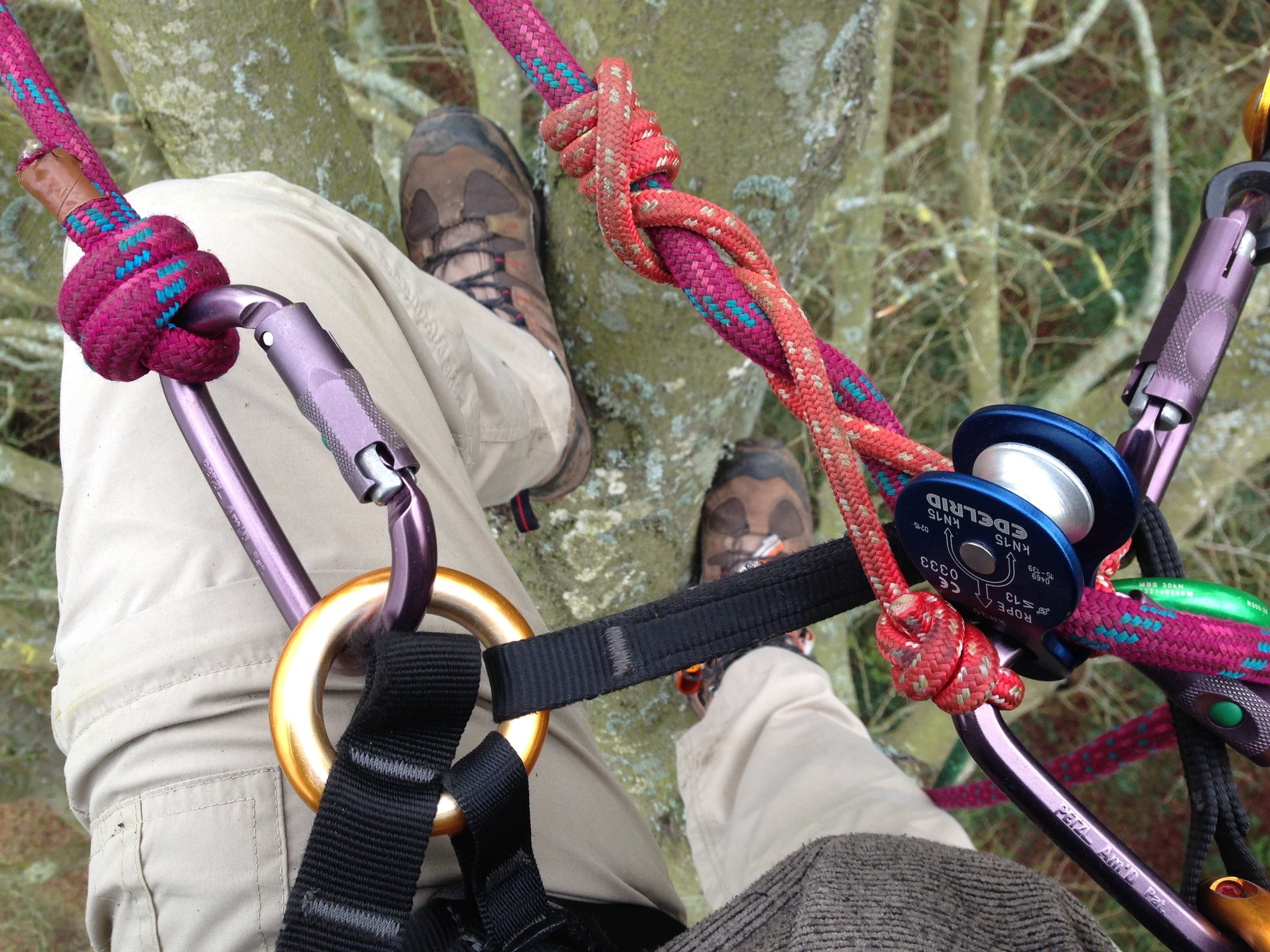I've been clearing out old webspace and found this lot of 'emotional iconography'. They may as well remain available so I'm putting them here. One man's trash... Here they all are.





























































A blog. Index. | Photographs, drawings and AI work have their own places now.
I've been clearing out old webspace and found this lot of 'emotional iconography'. They may as well remain available so I'm putting them here. One man's trash... Here they all are.

I just finished Alan Moore's Jerusalem after probably a year. It is hands down the most extraordinary book I've ever read (although I listened to the Simon Vance audiobook, which ordinarily would be heresy but for this book - which relies so much on the sounds of words - particularly the bloody remarkable Lucia Joyce chapter - I would say it is far and away the best way to approach it.)
Anybody with a passing interest in language and how it does and doesn't work should read the Lucia chapter ("Round The Bend") but not without the context of the preceding twenty-five chapters(!)
I can't, and don't want to, explain what makes it so profoundly unique and affecting because it cannot be described and has to be experienced first hand. And besides, it's a 1200-page four-dimensional microscopic and universally-scaled portrait of Northampton. So not an obviously appealing read...
Nevertheless - if you do make the journey through this huge book, please talk to me about it because more than anything I want to chew it over with somebody.
J Appl Behav Anal. 2007 Winter; 40(4): 773.
Get a printable copy (PDF file) of the complete article.
J Appl Behav Anal. 1974 Fall; 7(3): 497.
Full text is available as a scanned copy of the original print version. Get a printable copy (PDF file) of the complete article (43K)
Let the undernoted hereby be proclaimed as the circumstances under which I will gig:
The interval between sets be no longer than the duration of a set. If sets be of differing lengths, the interval to be no longer than the duration of the shorter set. And:
The cumulative time of each set to be longer than my cumulative journey time to the gig. And:
There be no entry fee for the players. And:
There be a bass player. (The bass player can be me if either a) I have song veto on grounds of competence or b) I have sufficient time before the gig to learn the nightmare songs. In the case of b) one drink or food item - at my discretion - to be bought for me per song.) And:
I maintain the right to add further self-important criteria on a whim.
We went to the aquarium.
We saw some kinda scary ones.
The sharks made us feel wary but
The seahorses were cool.
We went to the aquarium.
The jellyfish were fairies, the
anenomes were hairy and
I may sound quite contrary
But it beat the ass off school.
They fuck you up, your fucking kids,
Quite on purpose, cos it's cool.
They show you what a shit YOU were,
then put the boot in, just for YOU.
But they'll be fucked up in their turn,
By kids in baffling space-age garb,
who will not eat, who disappear,
who love them for their credit card.
You teach them how to toe the line,
to care, to love, create and spell.
But all your faults rub off on them
cos you're a fucking cunt as well.
Written to help alleviate my wife's frustrations with her sometimes complicated mother.
“The problem’s all inside your head” she said to me.
But frankly she’s the cause of my insanity.
I think I’ll help her in her struggle to be free
There must be fifty ways to kill your mother.
She’s used me simply as a chattel all these years.
I’ve been the butt of all the shouting and the sneers.
But now I’ve hatched a plan to counteract the tears
There must be fifty ways to kill your mother.
Shoot her right in the back, Jack.
Stab her in the face, Grace.
Push her down the stairs, Claire
And set yourself free.
Smash her head with a brick, Nick.
Plug her into the mains, Jane.
Knock her down with a van, Anne
Just listen to me.
She’s always judging, never listening, never wrong.
I’ve taken all her shit for way too fucking long.
But all I’m thinking as I sing my sorry song:
There must be fifty ways to kill your mother.
I ought to stop and try to think constructively.
This list, though fun, is just incriminating me.
But, could I do it with my freedom guaranteed…?!
There must be fifty ways to kill your mother.
Muck about with her pills, Jill.
Turn on all the gas, Cass.
Open one of her veins, Shane.
Just listen to me.
Push her into the Thames, Jen.
Just poison her food, Jude.
Set fire to her bed, Fred
And set yourself free.
And set yourself free.
And set yourself free.
DISCLAIMER:
I do not know what I am doing. I have never had any instruction in tree-climbing techniques, rope-work, or rock-climbing. It's all from Google, and meeting people out there and asking questions. I've not fallen out of a tree yet, but I'm bound to eventually, and my good fortune so far should not be seen as grounds for relying on my advice to any extent...
UPDATE: Since writing this, I've made a heap of videos on the subject.
Ropes
Ropes are basically static or dynamic. A static one does not, really, stretch any if it catches you when you fall. Dynamic ones do. This means you don't get a nasty injury from the sudden stop with a dynamic rope, because it gives nicely. On the other hand, it makes the whole set-up a bit spongey and possibly less energy efficient.
Harness
Essentially there are climbing harnesses and arborist harnesses. I bought the cheapest climbing harness I could find, because I didn't anticipate getting hooked the way I have. Arborist harnesses are really specialist bits of professional gear, cost lots, and are only available from professional suppliers really. The interesting difference though, and it's an important one, is that (rock) climbing harnesses have a single point of attachment at the front-centre (that is, the belay loop and the two parts of the harness - together - that the belay loop connects to.) Arborist harnesses have two big happy load-bearing metal rings on your hips, and a bridge between them, where you can attach. This means you can hang from your tie-off point and lean left and right, because the fixing-point moves along the bridge, and you can use a lanyard to clip to one hip, round the bole (trunk) or limb, and to the other ring, to secure yourself comfortably and stably while re-pitching.
How to climb
Essentially, you are climbing a rope, not a tree - although you use the tree to help you get up the rope. There are basically two categories of rope-climbing systems: SRT and DRT. SRT is Single Rope Technique and means any system where you tie the rope to something, eg your mate ties it to a high limb, or you throw it over a limb and tie it off to something solid on the ground (or the trunk, ensuring it won't slip upwards). Then you climb up the rope by whatever of various means and with whichever skills and bit of kit you might possess. Things to look up might be foot-locking, ascenders, friction hitch, and so on.
DRT is Double Rope Technique. It still only uses one rope (!) but this time you throw the rope over a limb, attach it to yourself, and then pull yourself up with the trailing end. Essentially you are climbing the trailing side of the rope, but as you move up, so that side comes down. This means you have created a 2:1 pulley system over the limb, so it takes half the energy to pull, but you only advance half as far. That's a big advantage though. Unless you are a gibbon. The other advantage, and it's significant, is that when you get up high in the tree, you can untie the rope, throw it over a higher limb, tie-off again and keep climbing. (Though, obviously, have a system so that you cannot drop the rope on the ground (stranding you), and so that you cannot fall out of the tree (breaking you). This latter is easily achieved with a lanyard made from a climbing sling (ok but usually not dynamic) or a short (about 3m) length of rope. If you make one of these (illustrated), you can easily adjust the length of it so you are secure. the red cord is a "prusik knot". It is made from 5mm climbing cord joined to a karabiner with a Double Fisherman's knot. The pulley isn’t necessary but REALLY helps as it means you can tighten the lanyard with one hand. The end of the rope has a Stopper Knot for safety, and the left-hand karabiner is attached with a similar knot that which cinches to the krab under load. Google that lot too.

Putting the rope higher and carrying on is called re-pitching. It is now a multi-pitch climb. Each leg of the climb being one pitch.
How I climb DRT
I began climbing on a set-up of Blake's Hitches that self advance. Look here for how that works! It's effective and cheap, and, like the hitch-climber pulley system below, you can descend on it as well as climb. However, look at it! It's a bit of a faff if you want to re-pitch. Also, I found it was quite easy to tie a Blake's Hitch wrongly. It's not as lethal as that sounds because it's very obvious when it's wrong, but it's a massive pain.

These days I climb with a Hitch Climber Pulley system, as shown very clearly here on Climbing Arborist. However, I am a flimsy old man and find it very hard to pull myself up, so I also use a Petzl Foot Ascender to pull the rope down (so pulling me up). (A cheaper, but way less cool, alternative would be to make a long-ish prusik loop, attached to the "down" rope, and stand in that.)
You can use one of many flavours of friction hitch - Distel Hitch, Blake's Hitch, etc. I use a Valdotaine Tresse, because it is very sensitive, seems to descend easily and rarely locks up.
Amusingly, if you have a hand-ascender, you can attach it to the down rope above the friction hitch, pass the trailing end of the rope through it (or, more conveniently, through a krab attached to it). Then, if you pull down on the down rope, you've made a THREE to one pulley system. For weaklings.
The basic multi-pitch DRT climbing system is clearly explained here on Climbing Arborist, although the video and sound quality isn't great.
Getting down again
If you are using any system with a friction hitch, you can descend without changing the setup at all. Just remember that where ropes rub together, where a lot of rope rubs against a single, small piece of rope the single, small piece of rope will quickly heat up and potentially fail. So descend slowly and monitor the friction hitch. For a small investment of time, you could dismantle the climbing set up, and abseil down with a nice metal belay device which, again, will heat up - but the only danger is burning yourself as it will not burn itself. A very good idea is to use a prusik as a backup on the belay device. Watch Get Out On A Rock to see what I mean.
Limbwalking
So you're coming down on your friction-hitch setup, but hang on!
Now you've got a nice high anchor in the tree, and you can use your easily-adjusted hitch-climber pulley setup to walk out along limbs. You can get anywhere! How cool is that?! This is where the Valdotaine Tresse really comes into its own.
That's probably about it! Have a nice time!
Really good resources:
Tree Climbing Field Guide
Cornell Tree Climbing YouTube guide
Climbing Arborist YouTube guide
Arborpod YouTube channel
Animated Knots (they also have an app, which is brilliant in trees)
I haven't got a Mum now. I miss her quite a lot.
I have instead to rummage through the memories I've got.
She had a Morris Traveller, that smelt of wood and leather.
That got quite cold and soggy in cold and soggy weather.
She'd take me to the barbers at the bottom of our street
And if I didn't wriggle I'd earn myself a treat.
I'd climb up on the barber's chair, then higher to the plank.
I'd ask to look like Fonz, and she'd say, "Just a buzz-cut, Frank."
She'd tickle me and tickle me until I'd start to cry,
Then scoop me up in horror and ask me sweetly, why
And I would tell her, sobbing, as to her neck I'd clutch
That I didn't want her stopping cos I loved her very much.
She'd buy us bars of Freddo when we'd visit Nanny Day
Who wasn't really nanny - just something that we'd say.
We didn't really notice when we stopped just popping over.
She saved us from the naked truth that Nanny's day was over.
I had nightmares all the time and more often than not
I'd wake and not go back to sleep and climb out of my cot.
I'd toddle into her room, gripping onto Ted
And walk straight past my Dad, and round to her side of the bed.
I also used to sleepwalk and once fell down the stairs
I woke as I was falling. Plummeting, and scared.
My memory is surely false, the truth is long forgotten, but
I swear my Mum ran down the stairs and caught me at the bottom.
Once when coming back from town I told her that I planned
To leave and "seek my fortune". She said "that's lovely," and
rather than protest or beg, when time came to the crunch,
She buttoned up my duffle coat and packed me up a lunch.
She once entered a contest, for Tampax of all things,
To come up with an ad-line, to help them shift the things.
The winner would be used in all the adverts and brochures.
My mother sent the beautifully simple line, "up yours."
Best of all my Mum liked writing poems - rude, and funny.
Absolutely priceless but never made her money.
Instead of just a birthday card, they'd be her contribution.
She was our very own Pam Ayres... After elocution.
I haven't got a Mum now. I miss her such a lot,
and here's the way I'm treasuring the memories I've got.
I've put them in a poem, in my Mother's sort of verse.
I wish that it could make her smile, though it's not as good as hers.
Were.
Written for The Guardian - Thu Jan 4 2007
Oh, look, the system has generated a message on my screen at work. "Your password will expire in 14 days. Do you want to change it now?"
No.
"Your password will expire in 13 days. Do you want to change it now?"
No.
"Your password will expire in 12 days. Do you want to change it now?"
No. Really. NO! I want to change it in two weeks' time. I can use the same password for four weeks. After four weeks you make me do it anyway. Stop, for the love of all that's holy, stop pestering me to do it from halfway into my run. Stop. Stop, before I punch my way through the monitor, grab the cabling, pull it through and leave it writhing on the desk like a disembowelled witch.
I'm a good boy. My password isn't "password" or "qwertyuiop". It's "NsLd438W". It's safe. It's impossible to memorise. Really. It's taken me two weeks to be able to throw away the note stuck behind the desk. It's finally committed to memory and you're pestering me to change it!
When I'm really slack, I get three reminders to pay my phone bill. I get two reminders to renew my domain registration. I get one reminder to insure the car. I have never received a reminder to make a will or feed my kids.
But seemingly I require 14 daily reminders to change a password; a password that will expire in a fortnight and oblige me to change it then anyway, at no cost to me but the inconvenience of dreaming up a random alphanumeric, and the 10 seconds to type it in. This is no drama. If it were great fun changing a password I would be glad of the prompt. "Woo hoo! Yeah! I'll change the password! Pass that mouse ..." If it were frankly aversive, I would be ill-inclined to bring the agony forward.
"Your wisdom teeth will be extracted in 14 days. Do you want them extracted now?" Er ...
But password changing is not an "event". It is 50% grey. It is "mild" weather. It is a beige filing cabinet. It is Belgium. It is dull. "In 14 days you will walk past a cat. It will be brown. It will not look at you. Do you want to walk past it now?" WHY NOT?!
Perhaps that is why the password reminder feels the need to promote itself so heavily. It's not a pair of trainers; it's membership of an elite cult.
Please. Give me an option to disable this. At least give me a checkbox: "Don't ask me again." This self-obsessed password business requires changing.
"IT Department. In 14 days I will come over there and beat you all unconscious with my keyboard. Do you want to change it now?"
If you'd like to comment on any aspect of Technology Guardian, send your emails to tech@theguardian.com
Written for the BMJ (BMJ 2004;329:1176) [Download Page]
Chris was always climbing the fence. It was tall, a mosaic of chain-link and climbing weeds, about eight feet, and surrounded the euphemistic “garden” on three sides – the fourth being a three-storey red-brick ward. The ward was a home of sorts to a dozen people with learning disabilities and challenging behaviour and, similarly, a half-dozen nurses. Chris’s most prominent behaviour was “absconding from the ward”, a curiously circular reason for his admission and an activity he engaged in quite successfully on a daily basis.
Absconding was more often than not preceded by a few minutes of artfully presented nonchalance, entirely cloaking him from the watchful eyes of the nurses posted strategically about the place looking for, and only seeing, those behaviours listed in the various reports and management guidelines currently in action. The abscond itself was never witnessed. By sheer well polished sleight, Chris would fade imperceptibly from the consciousness of the assembled staff and then appear, as if conjured from ether, running full-tilt away from the fence.
The staff would snap into action. Blood, previously thickening in our veins, would course effervescently around our bodies. A unified flock-consciousness would drive us towards our joint and single purpose: to catch Chris and bring him back to within the confines of the fence.
To catch Chris.
Our prey stood in excess of six feet and, with daily practice, had developed both the athleticism and gait of an ostrich. He could turn in an instant and be suddenly careering in a completely different direction with no evident change in speed. He could slow down and speed up with no suggestion of inertia or momentum. His flight, essentially, was Brownian.
We would fly from the ward like light streaming from an opening door. We had a purpose. We had a plan. Roles were never discussed but somehow we knew to break into smaller units and try to bisect Chris’s unknowable path. We would run at break-neck speed towards him as if locked onto him like missiles. We would run orthogonally to limit the available directions he might take. We would unspokenly gather volunteers to the chase as if in a stampede. We would hide behind trees.
Catching Chris, despite the iniquity of numbers, invariably took upwards of an hour. Pursuers would retire from the chase exhausted, or perplexed. Sometimes entire shifts would change over the duration of the hunt. Ultimately, however, Chris would be apprehended in a frenzy of arms, legs and divots, attracting staff and onlookers like flies around a kill. Only partially subdued he would be guided, in a ruck, back to the ward where more often than not he would be carefully watched for the rest of the day while he returned our gaze repackaged as a scowl.
I don’t know how it happened. Nobody remembers, if they ever knew.
Chris had breached the fence again and was high-tailing it across the grounds. Somebody went to fetch him back. The mood was completely different, completely at odds with the usual galvanizing sense of mutual excitement. Perhaps we no longer cared. Perhaps, somehow, we were inspired. Our solitary staff member didn’t pursue Chris. He didn’t barrel after him like a Pamplona bull. He just ran. Within a few minutes he was shoulder-to-shoulder with Chris and running alongside. And they kept running. They ran for a further ten or so minutes and then returned to the ward. Nobody laid a finger on Chris. Nobody said a word. There was a ten-minute run and then home.
There were no absconds after that. Just runs.

Blimey, that was a time.
